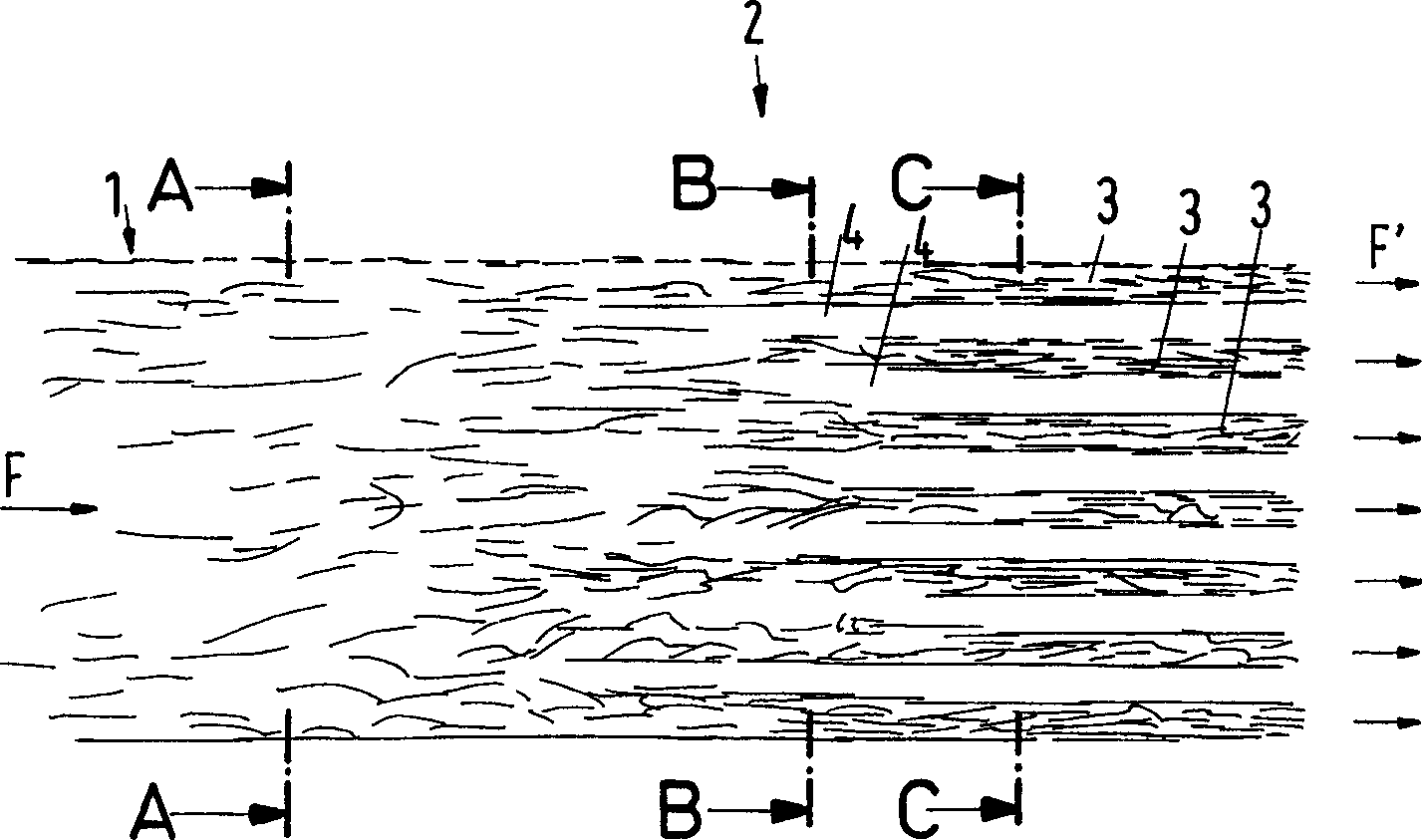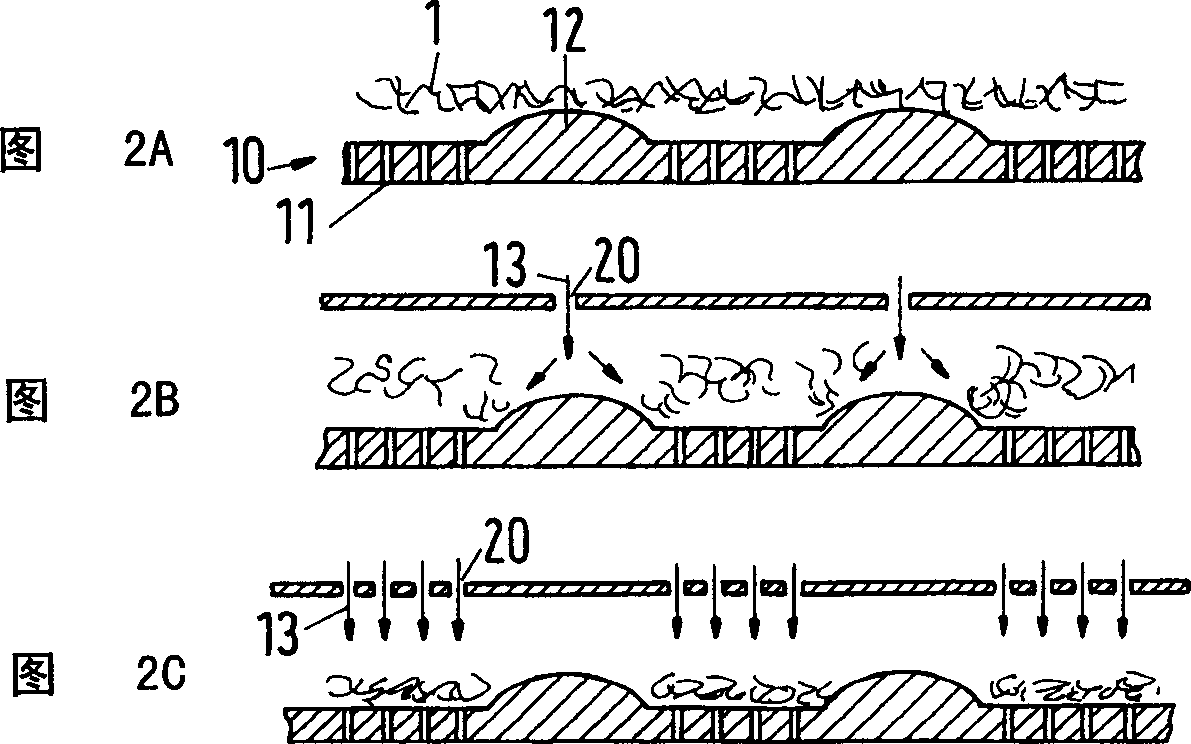Method and apparatus for producing fiber-fabric material
A technology of fiber structure and fiber fabric, which can be applied in the direction of fabric, fiber treatment, deburring device, etc., and can solve problems such as inapplicability
- Summary
- Abstract
- Description
- Claims
- Application Information
AI Technical Summary
Problems solved by technology
Method used
Image
Examples
Embodiment Construction
[0030] figure 1 A preferred embodiment of the method of the invention for producing a fibrous textile weave from spinning staple fiber material suitable for producing a flat textile weave in a manner known per se in the textile field, such as making spun yarns, is represented.
[0031] In the conveying direction F, the approximately continuous nonwoven 1 is fed to the processing zone and passed through the processing zone 2 . During the transport through the processing zone 2, a processing template is positioned on one side of the nonwoven 1 and fine jets such as water, saturated steam or air impinge on the nonwoven 1 from the other side (the jet and the processing template are in contact with each other) figure 1 not shown). Owing to the action of the jet stream and the processing template, in the conveying direction F, strip-shaped sparse areas 4 and a plurality of parallel strips 3 alternating therewith are obtained in the nonwoven. After the processing station 2, the str...
PUM
| Property | Measurement | Unit |
|---|---|---|
| diameter | aaaaa | aaaaa |
Abstract
Description
Claims
Application Information
 Login to View More
Login to View More - R&D
- Intellectual Property
- Life Sciences
- Materials
- Tech Scout
- Unparalleled Data Quality
- Higher Quality Content
- 60% Fewer Hallucinations
Browse by: Latest US Patents, China's latest patents, Technical Efficacy Thesaurus, Application Domain, Technology Topic, Popular Technical Reports.
© 2025 PatSnap. All rights reserved.Legal|Privacy policy|Modern Slavery Act Transparency Statement|Sitemap|About US| Contact US: help@patsnap.com



